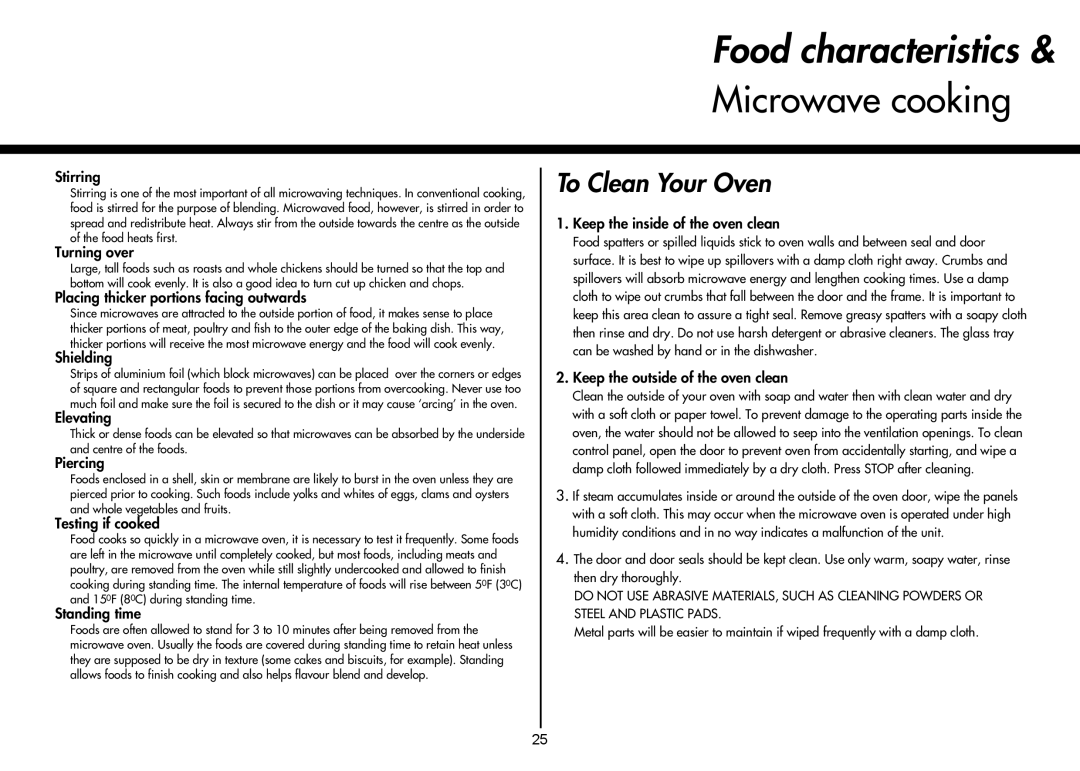MH-6047C, MH-6048S, MH-6048SS, MH-6047G specifications
LG Electronics has been a pioneer in home appliances and technology, and its microwave oven models MH-6047G, MH-6048SS, MH-6048S, and MH-6047C encapsulate the brand's commitment to innovation, efficiency, and cutting-edge design. These models are designed to cater to a variety of cooking needs, making them essential tools in any contemporary kitchen.The MH-6047G is distinguished by its sleek finish and user-friendly interface. Equipped with a powerful inverter system, this model offers precise temperature control, allowing users to cook dishes evenly without the risk of overheating. The inverter technology ensures that meals are cooked thoroughly, providing restaurant-quality results at home. This model also comes with a range of pre-programmed cooking settings that simplify meal preparation, making it ideal for busy households.
The MH-6048SS, on the other hand, emphasizes a blend of style and functionality with its stainless steel exterior. This durable surface not only contributes to the oven's aesthetic appeal but also makes it easy to clean. It features a spacious interior, accommodating large dishes with ease. The model is designed with innovative sensor cooking technology that automatically determines the optimal cooking time and power level, ensuring perfectly cooked food every time.
The MH-6048S offers similar features but incorporates advanced smart technology. This model is compatible with LG’s ThinQ app, allowing users to control the microwave remotely. This level of connectivity means you can start, stop, or monitor your cooking right from your smartphone, making it ideal for tech-savvy users looking for convenience.
Lastly, the MH-6047C stands out with its compact yet powerful design, perfect for smaller kitchens or apartments. Despite its smaller size, it does not compromise on functionality. It includes a variety of cooking presets and an easy-to-use control panel, designed for effortless operation. The model maintains high energy efficiency while delivering impressive cooking performance, making it an eco-friendly choice.
In summary, the LG Electronics models MH-6047G, MH-6048SS, MH-6048S, and MH-6047C offer a range of features, technologies, and characteristics that meet the demands of modern cooking. With innovations like inverter technology, sensor cooking, and smart connectivity, these microwave ovens are not just appliances but integral components of a smart kitchen ecosystem. Each model caters to diverse user needs, ensuring that LG’s legacy of quality and reliability continues in the culinary space.
